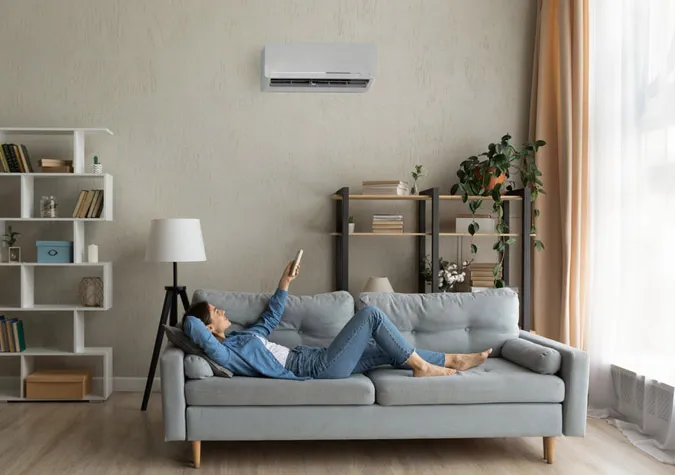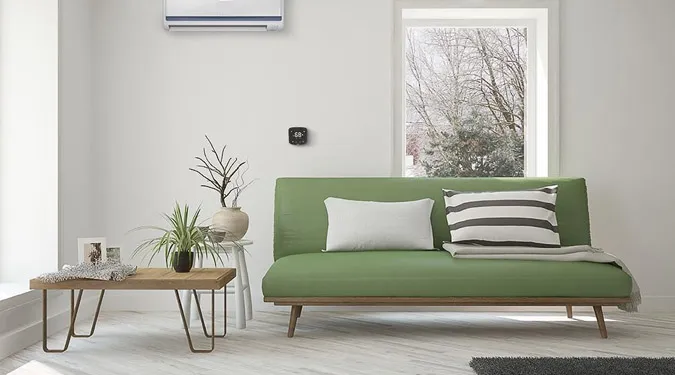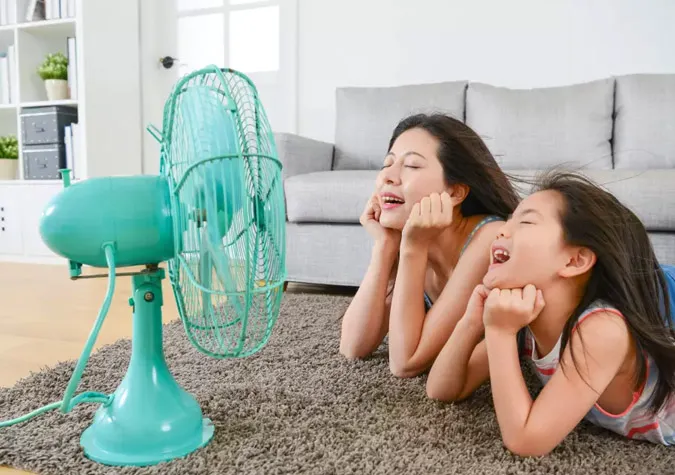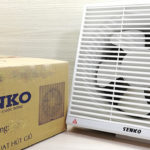1. Do not set the temperature below 25 degrees Celsius
Many people have the habit of lowering the air conditioner to 16 – 18 degrees Celsius for quick cooling. However, each time you lower the temperature by 5 degrees Celsius, the air conditioner consumes an additional 40% of electricity. Besides wasting electricity, this habit also causes the device to overload and adversely affects your health.

To save electricity, start the air conditioner at a temperature of 23 – 24 degrees Celsius, then gradually increase it to the desired level. Among them, 26 – 28 degrees Celsius is the optimal temperature for both health and your budget.
If the cooling is not enough, users can turn on an additional fan. This method helps save about 2 – 3% of electricity compared to running the air conditioner at a lower temperature.
2. Do not constantly turn on and off, and remember to turn off the circuit breaker
Another common mistake many people make is to lower the temperature until the room is cold, then turn off the air conditioner and use a fan. When they start feeling hot, they turn on the air conditioner again. This action not only increases the electricity consumption, but also quickly damages the air conditioner.
Each time the air conditioner starts up, it consumes a lot of energy to start the compressor, fan motor and cool down the air to the desired temperature. Constantly turning on and off also reduces the durability of the air conditioner.
According to experts, turn off the air conditioner about 30 minutes before going out.
After turning off the air conditioner with the remote control, remember to also turn off the circuit breaker (power switch to the machine). Because in reality, when turned off with the remote control, the machine still consumes standby power.
3. Seal doors, gaps, and avoid frequent door opening
When using the air conditioner, it is necessary to close the room doors, block any gaps to avoid heat loss.
You can check this yourself by going outside and placing your hand on the gaps of the doors. If you feel the cold air, it means that the indoor air is leaking out. Therefore, seal the gaps with tape or have a technician come to check and fix them.
When going out, do not leave the doors open or frequently open and close the doors. Opening the doors multiple times without closing them is an opportunity for hot air to enter the room, causing the temperature to rise and making the air conditioner work harder to return to the desired temperature.
In addition, you should cover the room with thick curtains. Curtains can prevent direct sunlight from entering the room, reduce the indoor temperature, and also prevent the air inside the room from escaping.
4. Install the air conditioner in a suitable location
To ensure the air conditioner stays cool, durable, and energy-efficient, the outdoor unit should be installed in a well-ventilated and shaded area. Placing the outdoor unit in a cramped space will make it difficult for the hot air to escape, resulting in wasted energy.

Do not install the indoor unit in places where air easily escapes, such as entry doors or windows. A room with glass doors and windows also makes the machine consume more electricity to cool down. Therefore, you should close the curtains when using the air conditioner.
If the air conditioner is obstructed or blocked by objects in the room, the cold air flow cannot reach the desired areas.
5. Set a timer to turn off
Use the timer function of the air conditioner to select the time to turn it off, especially at night. This not only helps protect your health but also saves electricity very effectively.
6. Do not use the air conditioner 24/7
Do not leave the air conditioner on 24/7, even on hot days. In an air-conditioned environment, the air does not circulate, and the humidity in the room is greatly reduced, leading to dehydration, dry skin, and dry respiratory passages.
In addition, leaving the air conditioner on all day increases the electricity bill significantly and also reduces the lifespan of the internal components of the machine.
Therefore, use a fan instead of the air conditioner when the weather is not too hot to save electricity and provide better ventilation.
7. Use the “Dry” mode
Use the remote control to switch from the cooling mode “Cool” (represented by a snowflake symbol) to the “Dry” mode (removing moisture, represented by a water drop symbol). This simple action will significantly reduce the electricity consumption of the air conditioner and prevent thermal shock, as the room temperature will not be too low compared to the outdoor temperature.
This method saves electricity because when operating in Cool mode, the air conditioner takes heat from the room to push it out to the outdoor unit, cooling down the air. This process consumes a lot of energy.
Meanwhile, in Dry mode, the air conditioner removes moisture from the room, providing fresh and dry air. This mode consumes less electricity than the cooling mode.
Note that you should only use the Dry mode when the outdoor temperature is not more than 34 degrees Celsius different from the indoor temperature. Experts recommend using the Dry mode when the outdoor temperature is not more than 34 degrees Celsius.
8. Adjust the direction of airflow and combine with a small capacity fan
To speed up the cooling time of the air conditioner, you can adjust the direction of the airflow to suit the space and use an additional fan to distribute the cool air more evenly. This allows the cold air to reach all corners of the room, the air conditioner reaches the stable temperature faster, and saves electricity.

9. Check the energy-saving index on the energy label
To transparently display the device’s specifications, the Ministry of Industry and Trade requires manufacturers to affix a green energy label with a star rating from 1 to 5 (where 5 is the most energy-efficient).
If the devices have the same star rating, consumers can also check the energy efficiency index (CSPF) on the label. The higher the index, the more energy-efficient the device is.
10. Regularly maintain and clean the machine
Users should clean the dust filter on the indoor unit every 2 weeks to save electricity from 15 – 20%. After 6 months, the air conditioner should be thoroughly cleaned and maintained, both the outdoor and indoor units.
Preparing Yellow Apricot Flowers to be in Full Bloom for Tet Celebration
As the Lunar New Year quickly approaches, many families are looking for guidance when it comes to selecting, purchasing, maintaining, and decorating with beautiful golden apricots. To ensure you get the most out of this lovely tradition, this article will provide you with specific instructions for choosing, caring for and decorating with yellow apricot blossoms. Learn how to make the most of this iconic symbol of the Tet holiday season!






































